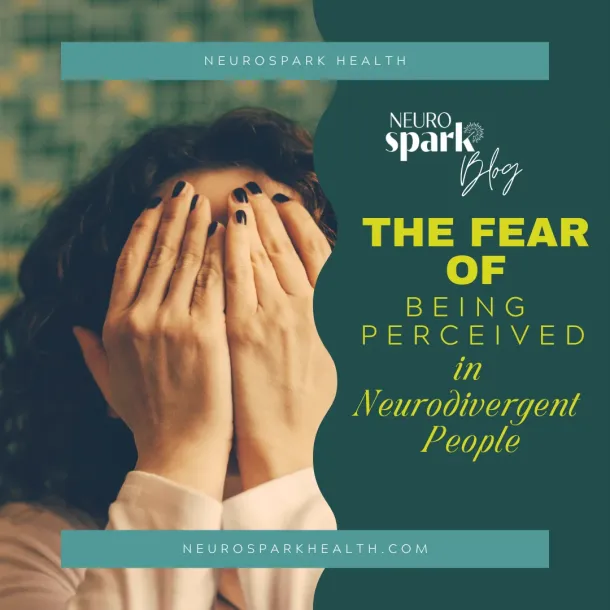Things I Didn’t Realize Were Actually Stims

Like many others who are engaging in self-exploration of their autism, the internet and social media became invaluable resources to me in my quest to understand my differences. As a therapist, I am very familiar with the clinical symptomatology of “Autism Spectrum Disorder” as listed in the DSM-5. I understand the criteria and the way it is structured, but their examples of how this may manifest for people have a lot of gray areas, and I needed something more relatable. The examples they list are only a tiny fraction of the vast spectrum of ways that these characteristics can present.
Specifically, when looking at one of the DSM-5’s examples of stimming as “rocking, flapping, pacing, or spinning,” it can paint a very limited picture of what stimming could look like. “I don’t rock or spin,” I thought to myself, “this must not apply to me.”
Later in life, I was fortunate enough to discover internet posts where people actually did the (extremely helpful and validating) work of creating much more comprehensive lists of stimming examples. Only then did I realize how vast and varied stimming really is. I was able to connect the dots on a lot of repetitive behaviors that I have been doing my entire life without even the thought that they were, in fact, self-stimulatory. Stims can be very obvious, and they can also be very subtle.
Things I Didn’t Know Were Stims:
- fidgeting
- clicking or tapping pens
- squinting or blinking frequently
- frequently clearing the throat or coughing
- biting nails
- skin picking
- cracking knuckles and joints
- tapping or drumming fingers
- bouncing legs
- moving or tapping feet/toes
- rolling ankles
- clicking teeth or running tongue over teeth
- biting cheeks
- rubbing lips together
- clenching jaw
- playing with jewelry
- playing with food
- rubbing face
- hair twirling or pulling
- squeezing hands, making tight fists, wringing hands
- staring at moving objects, patterns, bright colors, or lights
- watching pleasing visuals for extended periods of time
- oral fixation: biting and chewing things
- playing with clothing or fabrics
- leaning on walls
- bumping into people or things in the environment
- running hands through the shelves in store aisles
- watching the same movies or shows repeatedly
- listening to the same music repeatedly
- tensing and/or relaxing muscles
- humming
- giggling at nothing
- groaning and grunting
- repeating phrases and words that feel good
- fascination with smells/tastes
- blasting music
- looking at shiny or glittery objects
- sorting objects
- tasting foods with strong or specific flavors
- eating crunchy or spicy food
- touching/eating/wanting to feel very cold or hot sensations
- clicking buttons or switches
- running fingers over computer keys
- playing with sand, dough, slime, water, etc
- staring at ceiling fans
- watching lava lamps or changing colors
- spinning or rolling things
- cutting, ripping, stretching, squeezing, peeling things
- climbing or balancing on objects
- swinging
- stacking things and watching them fall
- doodling
- frequent hand holding or hugging
- repeatedly petting an animal
- tracing objects in the visual field with your eyes
The list continues. This is by no means an exhaustive or complete list. Stimming can be really personal, and just as every individual is unique, so are their preferences. Preferences can change, too.
It has been a very enlightening process to become more aware of my stimming in its many different forms. I know for a fact that physical touch and pressure are one of the most regulating sensations for me. I also prefer feeling soft and smooth surfaces. I know that my sensory system feels happiest when I am feeling a fuzzy blanket or soft texture rather than playing with slime or water. I love tapping and clicking and peeling. I am also realizing that I have always had a fascination with staring at rhythmic movements, such as an animated screensaver, a color-changing light, or leaves swaying in the wind. I stick to my favorite musical albums over and over again for a reason.
As a kid, I never had any erasers in class for a reason. I loved rubbing them and poking them and ripping them off the pencil. I bump into things a lot and often am leaning my entire body or a body part on a wall. It’s because the sensory input on my muscles and joints helps me feel connected. These realizations have all helped me understand my past and current self, and I can look at my stimming not with judgment, but with appreciation that I can engage in behaviors that are regulating for me.
Right now, I am rolling my ankle around while I feel the top of my thigh press firmly on the underside of the desk. I’m pausing to feel the texture of my face. Later, I may find myself focusing and unfocusing my eyes while watching the snowflakes fall outside my window. And then, I might make silly noises to my dog, just because it feels good. It’s awesome to honor what your body needs.
Interested in learning more? Keep reading:
What is Stimming?
Do All Autistic People Stim?
Vocal Stimming
ADHD Stimming

Dani Rodwell, LCSW
One Spark Can Light a Fire
Diagnosis can be the catalyst for significant momentum. It can represent a turning point for your life, where you can move forward equipped with new knowledge about yourself and a new framework to guide you in your journey.
A formal assessment provides an incredible opportunity to gain knowledge about who you are and how you see the world.



